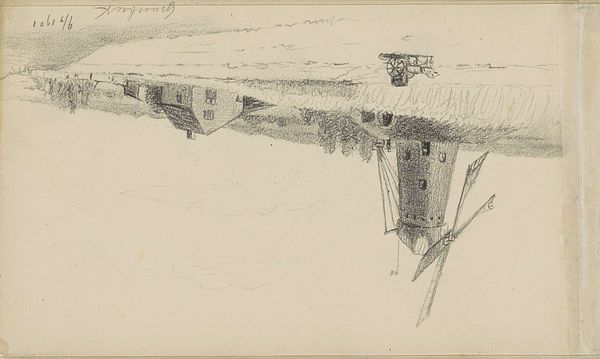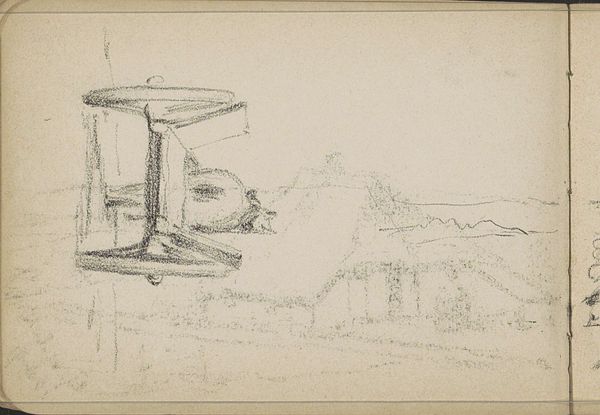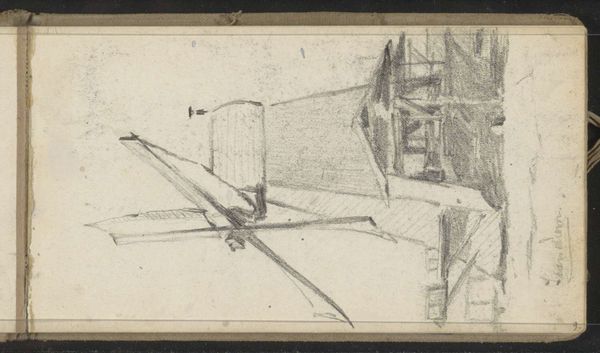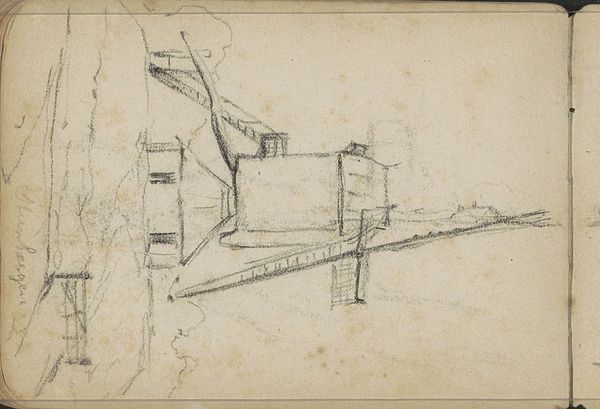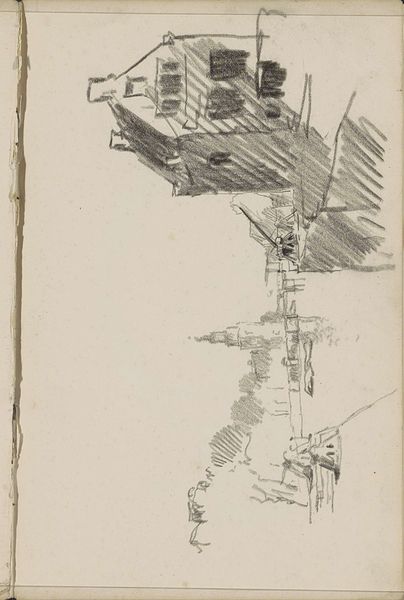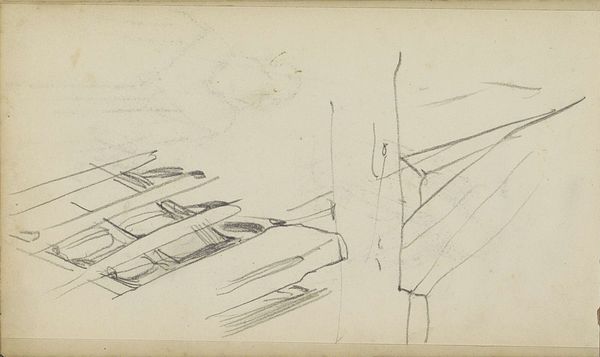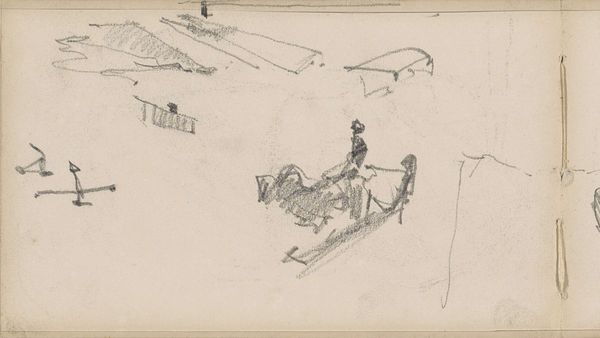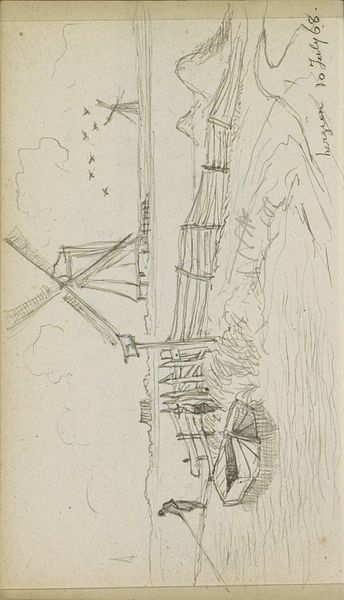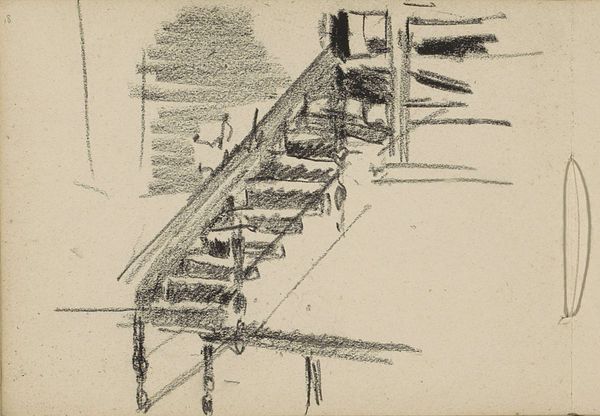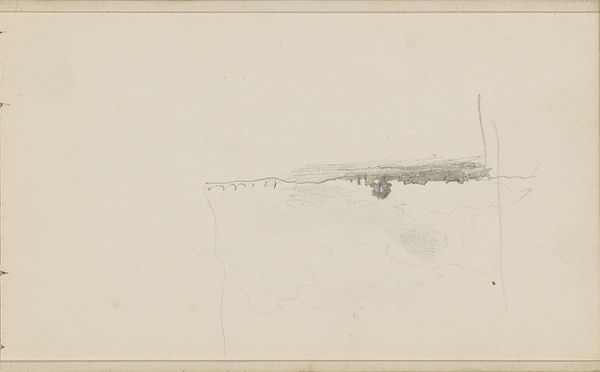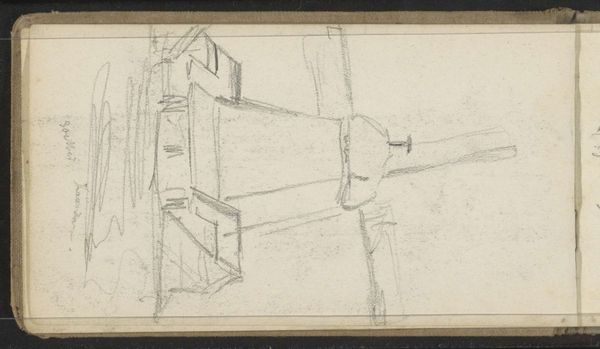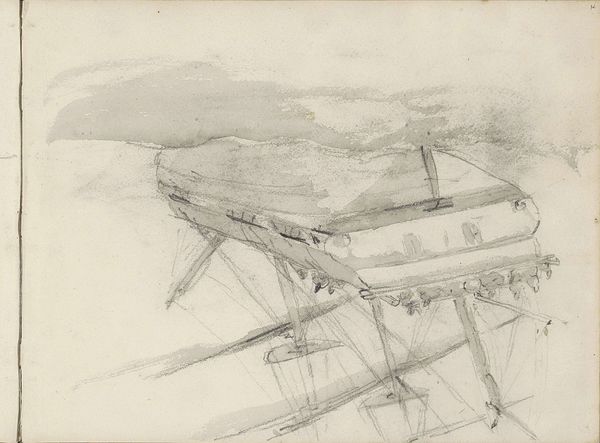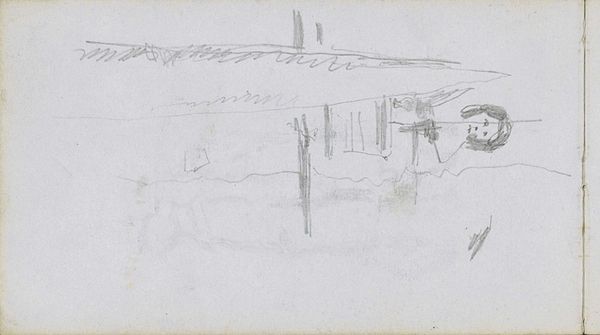
Copyright: Rijks Museum: Open Domain
Curator: There's a wonderfully ephemeral quality to this drawing; it feels almost like a half-remembered dream. Editor: Yes, it’s "Bridge over a River" by Johannes Tavenraat, rendered in pencil around 1868 or '69. Tavenraat had a profound talent for capturing landscapes. I’m curious, what feelings does this bridge evoke in you? Curator: Bridges, of course, always represent connection and transition. But here, the fragility of the sketch—the hesitant lines and almost ethereal rendering—imbues it with a sense of the transient. Are we looking at a real bridge, or something more symbolic? The line wavers between sturdy structure and a dreamscape. Editor: That wavering certainly points to Romanticism. It makes me think about infrastructure in the Netherlands, this one looks older, possibly of strategic importance at the time? You know, it wasn't just about crossing water but about trade, military access, civic power, even. Who built the bridge, and who benefited from it? Curator: That is true, but I still gravitate to the emotional resonance of it. There is almost a melancholy in its impermanence that really attracts me. I'd also argue the romantic style pulls you to contemplate nature itself and man’s relationship to it. Editor: Yes, I can appreciate that reading. We often forget that public works shape not just our physical landscapes but also our mental ones; bridges becoming shorthand for connection, literally and figuratively. A fragile bridge, of course, implies a fragile peace, a precarious connection. Curator: That interplay between the concrete and the symbolic, the real and the felt – it really animates this deceptively simple sketch. Editor: Precisely. Art isn’t just a reflection of the world but a force shaping our understanding of it, brick by brick, or rather, pencil stroke by pencil stroke. Thanks for illuminating this seemingly modest work.
Comments
No comments
Be the first to comment and join the conversation on the ultimate creative platform.
